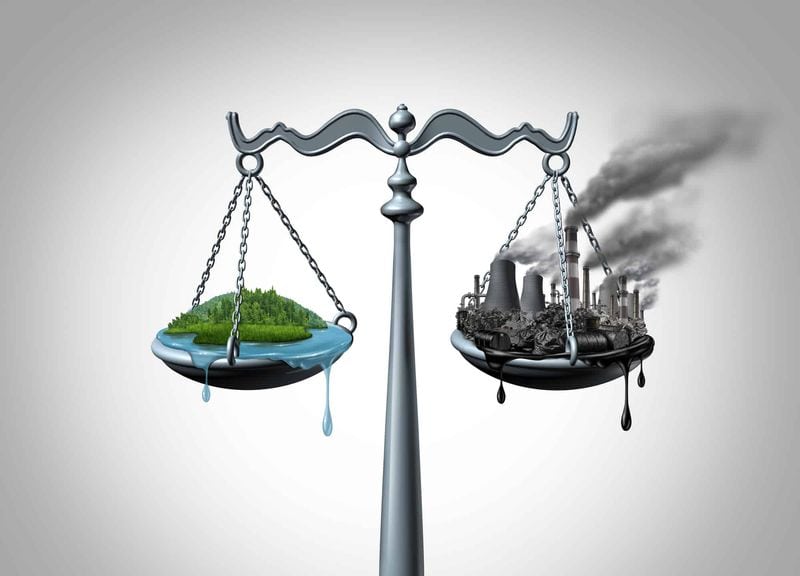The 1970s, a decade filled with disco beats, bell-bottoms, and a lively counterculture, was a time when the world was vastly different from today. The era was characterized by a spirit of freedom and experimentation, both socially and legally. Many activities that were commonplace and even celebrated in the ’70s would raise eyebrows or even lead to legal consequences in today’s world. As we reflect on this vibrant period, it’s fascinating to explore how societal norms and laws have evolved. Here are fifteen things from the ’70s that would likely land you in hot water today.
1. Smoking in Restaurants

Back in the 1970s, lighting up a cigarette in a restaurant was as common as ordering a cup of coffee. Smoking sections? They weren’t even a concept. People smoked freely indoors with little regard for secondhand smoke. Today, strict laws restrict smoking in most public places, reflecting a growing awareness of health risks. The transition to smoke-free environments highlights a significant shift in public health policy. Imagine the distinct aroma of tobacco mingling with the scent of freshly cooked meals, a scene that seems almost foreign to modern sensibilities. It’s a stark reminder of how far we’ve come.
2. Driving Without Seatbelts

In the ’70s, seatbelts were more of an optional accessory than a legal requirement. Families would pile into cars, often with kids in the back, unrestrained by today’s mandatory seatbelt laws. The idea of seatbelt enforcement was not yet widespread, despite the obvious safety benefits. Today, seatbelt laws are strictly enforced, and wearing one is second nature to most drivers and passengers. This reflects a growing emphasis on road safety and accident prevention. The shift from optional to obligatory seatbelt use represents a significant change in societal attitudes towards personal safety and responsibility on the road.
3. Open Alcohol Containers in Cars

In the 1970s, it was not uncommon to see drivers enjoying a drink while behind the wheel. Open container laws were lax, allowing for open alcoholic beverages in vehicles. This behavior, widely accepted at the time, would lead to severe penalties today. The modern focus on road safety has led to stricter regulations to prevent impaired driving. The change in law underscores a collective commitment to reducing traffic accidents and promoting responsible drinking. It’s hard to imagine such leniency now, reminding us of how societal values surrounding alcohol consumption and driving have evolved dramatically.
4. Lawn Darts

Lawn darts, or “Jarts,” were a popular backyard game in the ’70s, despite their dangerous nature. These oversized darts, with sharp metal tips, were thrown at ground targets, often causing injuries. The game’s risks eventually led to its ban in the late 1980s. Today, such hazardous toys would never pass modern safety standards. The evolution from dangerous playthings to safer recreational activities highlights increased awareness and advocacy for child safety. Reflecting on lawn darts is a nostalgic trip back to carefree days, tempered by an understanding of the inherent risks these games posed to families enjoying outdoor fun.
5. Hitchhiking

Hitchhiking was a common practice during the ’70s, viewed as an adventurous and economical way to travel. However, growing concerns about personal safety have led to the decline of this once-popular mode of transportation. Today, hitchhiking is largely discouraged, with many areas enforcing laws against it, prioritizing safety over convenience. The shift reflects increased societal awareness of potential dangers and a preference for more secure travel options. While hitchhiking might evoke a sense of nostalgia for a simpler time, the change in attitude underscores a broader emphasis on personal security in a rapidly evolving world.
6. Unregulated Pharmaceuticals

In the ’70s, pharmaceuticals were not as tightly regulated as they are today. Medications were often available without the comprehensive safety warnings or childproof packaging now considered standard. This lack of regulation posed significant health risks. Over time, increased awareness of drug safety has led to stringent regulations, ensuring consumer protection. Today’s pharmaceutical landscape is characterized by rigorous testing and labeling requirements. Reflecting on this shift reveals how public health priorities have evolved, focusing on consumer safety and education. The regulation of pharmaceuticals highlights the progress made in safeguarding individuals from potential risks associated with medication.
7. Corporal Punishment in Schools

In the 1970s, corporal punishment in schools was a widely accepted disciplinary method. Teachers and administrators often used physical discipline to maintain order in classrooms. Today, such practices are considered abusive and have been banned in many countries. The shift reflects a broader understanding of children’s rights and the importance of non-violent disciplinary approaches. This change highlights significant progress in educational environments, promoting positive behavior through encouragement rather than fear. Reflecting on past practices serves as a reminder of how educational philosophies have evolved, focusing on nurturing rather than punishing students to foster a supportive learning experience.
8. No Child Car Seats

During the ’70s, child car seats were not yet a standard safety feature. Kids often roamed freely in the backseat, unrestrained by today’s strict safety standards. The absence of mandatory car seats highlights a time when road safety protocols were less developed. Today, child car seats are legally required, reflecting a commitment to the well-being of young passengers. This shift underscores the importance of protecting the most vulnerable in traffic environments. The evolution of car safety measures illustrates growing awareness and advocacy for child safety in vehicles, marking a significant advancement in road safety standards.
9. Lead-Based Paint

Lead-based paint was commonly used in homes during the 1970s, despite its health hazards. The realization of lead’s toxic effects, particularly on children, led to its ban in residential properties. Today, using lead paint is illegal, reflecting heightened awareness of environmental health risks. The shift away from lead-based products showcases significant progress in public health and safety. Modern regulations emphasize the importance of safe living environments, free from harmful substances. Reflecting on this transition highlights a broader commitment to protecting individuals from environmental hazards, prioritizing health and safety over traditional practices in home construction.
10. Public Payphones

While not illegal, the public payphone’s ubiquity in the ’70s has diminished due to technological advancements. Payphones were once essential for communication, lining city streets and public spaces. The decline of payphones, replaced by personal mobile devices, reflects a drastic change in how we connect. Today, finding a payphone is rare, with many removed due to vandalism or lack of use. This evolution symbolizes the rapid pace of technological change, highlighting the shift from communal to individual communication methods. Reflecting on payphones evokes nostalgia for a time when staying connected required more effort and patience.
11. Frequent Use of Asbestos

Asbestos was a widely used building material in the 1970s, praised for its fire-resistant properties. However, its health risks, including cancer, led to a ban in many countries. The transition from using asbestos reflects increased awareness of occupational safety and environmental health. Modern construction practices now prioritize safer alternatives, highlighting a commitment to creating healthier living and working environments. The shift away from asbestos underscores a broader understanding of the long-term health implications associated with hazardous materials. Reflecting on this change illustrates the progress made in protecting individuals from environmental and occupational hazards.
12. Drunk Driving Acceptance

In the ’70s, drunk driving was not viewed with the same severity as today. Social norms often downplayed the risks, and enforcement was lax. Today, stringent laws and awareness campaigns aim to prevent impaired driving, reducing road fatalities. The evolution from casual acceptance to strict enforcement reflects a profound shift in societal attitudes toward road safety. This change highlights the growing recognition of drunk driving’s dangers and a collective commitment to safer roads. Reflecting on past attitudes serves as a reminder of the progress made in promoting responsible alcohol consumption and driving practices.
13. Animal Testing in Cosmetics

Animal testing for cosmetics was common in the 1970s, with little public awareness of the ethical implications. Today, such practices face significant opposition, leading to bans in many regions. The shift reflects a broader understanding of animal rights and ethical consumerism. Modern alternatives prioritize cruelty-free testing methods, promoting compassion and innovation in product development. Reflecting on past practices highlights the progress made in aligning business practices with ethical standards. The evolution from widespread animal testing to cruelty-free approaches underscores a growing commitment to humane treatment and ethical responsibility in the beauty industry.
14. Lack of Environmental Regulations

The 1970s marked a time of industrial growth, often at the environment’s expense. Lax regulations allowed pollution of air and water without significant repercussions. Today, stringent environmental laws aim to protect natural resources and promote sustainability. The shift reflects increased awareness of environmental impacts and a commitment to preserving the planet for future generations. Reflecting on past practices highlights the progress made in balancing industrial growth with ecological responsibility. The evolution from minimal oversight to comprehensive environmental protection showcases a broader commitment to sustainability and responsible stewardship of natural resources.
15. Unsupervised Play

In the ’70s, children often played outdoors unsupervised, exploring neighborhoods and creating their own adventures. Today, such freedom is rare, with parents more cautious due to safety concerns. The shift reflects a growing awareness of potential dangers and an emphasis on structured activities. While unsupervised play evokes nostalgia for a time of independence, modern parenting prioritizes safety and supervision. Reflecting on this change highlights a broader societal shift towards protecting children while balancing freedom and safety. The evolution from free-range playing to structured supervision underscores changing attitudes towards child safety and well-being.
16. Unregulated Private Fireworks Shows

Back in the ’70s, organizing a private fireworks show in your own backyard was a thrilling way to celebrate special occasions. Without today’s strict regulations, anyone could purchase an array of explosive fireworks and light up the night sky.
Families and friends gathered as vibrant displays filled the air, often without any safety measures in place. Children watched in awe, sometimes assisting with the setup or ignition.
Today, such unregulated displays would be illegal due to the high risk of injury and fire hazards. Professional oversight and safety precautions have become necessary to enjoy these explosive spectacles.
17. Street Racing on Public Roads

In the 1970s, street racing was an exhilarating pastime for many car enthusiasts. Public roads transformed into makeshift racetracks as classic muscle cars roared through neighborhoods.
The informal nature of these events meant that races could pop up spontaneously, with little regard for traffic laws or public safety. Drivers pushed their vehicles to the limit, delighting spectators who lined the streets to catch the action.
Modern laws have since banned such street races due to their dangerous nature and potential to cause accidents. Today, legal racetracks provide a safer environment for racing enthusiasts to showcase their skills.

Well, hello there!
My name is Jennifer. Besides being an orthodontist, I am a mother to 3 playful boys. In this motherhood journey, I can say I will never know everything. That’s why I always strive to read a lot, and that’s why I started writing about all the smithereens I came across so that you can have everything in one place! Enjoy and stay positive; you’ve got this!

